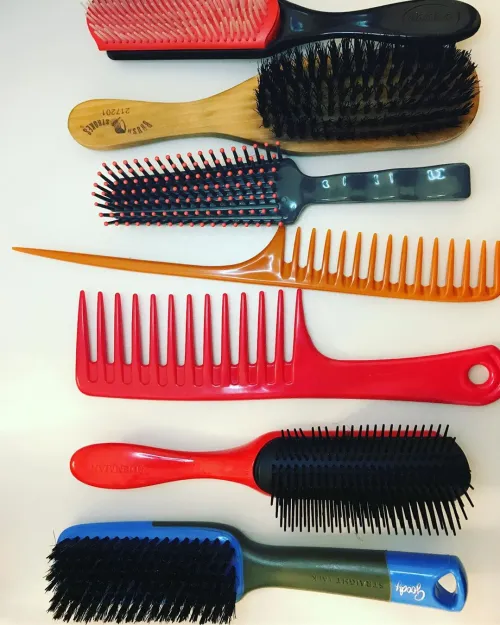Select your cleansing agent
Opt for a gentle shampoo, akin to what you use on your hair, to effectively cleanse your brushes. Steer clear of harsh detergents, especially for natural-bristle brushes, as they can potentially harm your hair tools. However, ensure the shampoo contains sulfates for thorough cleansing. Alternatively, a mixture of baking soda (around two teaspoons) can serve as a mild yet effective cleanser, lifting away dirt and grime.
Employ lukewarm water
Fill a medium-sized bowl with lukewarm water—not hot—and incorporate your chosen detergent.
Pay attention to the details
Post-cleansing, if any dirt persists, utilize a toothbrush soaked in your cleaning solution to gently eradicate it. There are also specialized brush cleaners available in various shapes for this purpose.
Handle drying with care
Conclude by carefully drying your brushes, positioning them with their bristles facing downward on a paper or hand towel. Allow them to air dry overnight to ensure complete moisture removal.
Different Kinds of Hairbrushes

Different types of brushes require different cleaning methods to ensure they stay in good condition without damage. Here’s how to clean each type:
Paddle brushes: These are excellent for blow drying and smoothing hair. Clean them thoroughly by gently brushing the bristles and brush pad with a toothbrush dipped in cleansing solution. Avoid submerging the brush pad in water to prevent moisture buildup behind the bristles, which can lead to mildew.
Bristle brushes: Whether round or small styling tools with nylon bristles, these can be cleaned similarly to paddle brushes. Use a toothbrush soaked in cleansing solution to clean the bristles and pads after removing hair.
